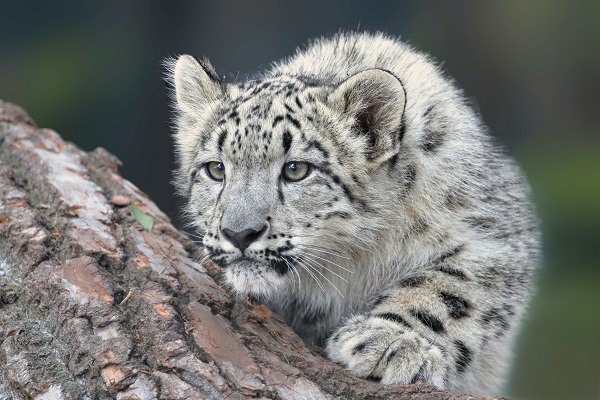
Nestled high in the remote mountains of Central and South Asia, the elusive and enchanting snow leopard (Panthera uncia) has long captured the imagination of humans. Known for its ethereal beauty and elusive nature, this magnificent big cat has a rich history intertwined with the cultural and ecological tapestry of its mountainous habitat. In this article, we delve into the history of the snow leopard and explore its vital role in maintaining the delicate balance of the high-altitude ecosystems it calls home.
Ancient Beginnings
The snow leopard’s history dates back thousands of years, with early mentions of this remarkable creature appearing in ancient texts and folklore. In the shadow of the Himalayas and other mountain ranges, it was revered by indigenous cultures for its mystical qualities. In Tibetan culture, it was known as “Shan” or “Gangs-Seng-nya-ras,” symbolizing a creature of spiritual significance and a protector of the mountains.
Historical Range
The snow leopard’s historical range extended across the vast expanse of the high-altitude regions of Central and South Asia, encompassing countries like Mongolia, Tibet, Pakistan, India, and Nepal. Its adaptability to extreme altitudes and cold climates allowed it to thrive in these rugged environments.
Role in the Ecosystem
The snow leopard plays a pivotal role in its ecosystem as an apex predator. Its presence helps maintain the ecological balance of its habitat in several ways:
Controlling Herbivore Populations: Snow leopards primarily prey on herbivores such as ibex, blue sheep, and marmots. By regulating the population of these herbivores, they prevent overgrazing, which can lead to soil erosion and habitat degradation.
Biodiversity Preservation: Their role as top predators ensures a diverse range of species in the ecosystem. This helps maintain the health and resilience of these high-altitude habitats.
Scavenger Cleanup: Snow leopards also play a role as scavengers, consuming carrion when available. This helps prevent the spread of diseases within their territories.
Adaptations for Survival
Surviving in some of the harshest environments on Earth requires a set of remarkable adaptations:
Thick Fur: The snow leopard’s thick, fur-covered body helps it withstand freezing temperatures, with its long tail providing balance on treacherous terrain.
Camouflage: Its spotted coat allows it to blend seamlessly with the rocky, snow-covered landscapes it inhabits, making it incredibly difficult for prey and predators alike to spot.
Powerful Build: Muscular and agile, snow leopards are capable of scaling steep cliffs and making incredible leaps to ambush their prey.
Conservation Challenges
Despite its historical significance and ecological importance, the snow leopard faces numerous threats that jeopardize its existence. These challenges include habitat loss due to human development, poaching for its fur and bones, and retaliatory killings by herders protecting their livestock.
Thankfully, efforts are underway to protect this majestic big cat and its fragile mountain ecosystems. Governments, conservation organizations, and local communities are working together to establish protected areas, monitor populations, and raise awareness about the importance of coexisting with snow leopards.
Conclusion
The snow leopard’s history is intertwined with the cultural and ecological heritage of the high Himalayas and surrounding regions. This elusive and enigmatic big cat plays a crucial role in maintaining the balance of its ecosystem, and its preservation is not only vital for the species itself but for the health of the entire region’s biodiversity.
12 Fun Facts About the Snow Leopard
Camouflage Experts: Snow leopards have a beautifully spotted coat that provides excellent camouflage in their rocky and snowy habitats. Their spots help them blend seamlessly into their surroundings, making them incredibly elusive.
Long, Luxurious Tail: Snow leopards have one of the longest tails among big cats, which can reach up to 3 feet in length. They use their tail for balance when traversing steep and rugged terrain.
Altitude Champions: Snow leopards are well adapted to life at high altitudes. They are often found in mountainous regions at elevations ranging from 9,800 to 17,000 feet above sea level.
Silent Predators: These big cats are known for their stealthy hunting techniques. They can approach their prey with incredible silence, thanks to their soft, padded paws that make minimal noise.
Solitary Lifestyle: Snow leopards are generally solitary animals, with males and females only coming together for mating. They have large territories to roam, which can extend over 50 square miles.
Powerful Jumpers: Snow leopards are excellent jumpers and can leap as far as 50 feet horizontally, making them agile hunters that can ambush prey from a distance.
Slow-Moving Prey: Their preferred prey includes animals like blue sheep and ibex, which are also agile mountain climbers. Snow leopards rely on their stealth and the element of surprise when hunting these fleet-footed animals.
Vocalizations: While typically silent, snow leopards can produce a variety of vocalizations, including hisses, growls, and chuffing sounds, especially during the mating season.
Cold Climate Adaptations: Snow leopards have several physical adaptations to thrive in frigid environments, including dense fur and a well-insulated body that helps them withstand extreme cold temperatures.
Endangered Status: Unfortunately, snow leopards are listed as an endangered species due to habitat loss and poaching. Conservation efforts are crucial to protect these magnificent cats and their habitats.
Cryptic Scent Marking: Snow leopards are known to mark their territories using scent markings. They may urinate or scrape the ground with their hind legs to leave behind their scent as a territorial marker.
Slow Reproduction: Snow leopards have a relatively slow reproductive rate. Females typically give birth to a litter of two to three cubs, and the cubs stay with their mother for about 18-22 months before becoming independent.
Related Articles & Free Email Newsletter Sign Up
Majestic Predators of the Night: The Great Horned Owl
The American Alligator: A Vital Component of Ecosystem Balance
The Reticulated Python: A Majestic Serpent with Ecological Consequences

Comment here